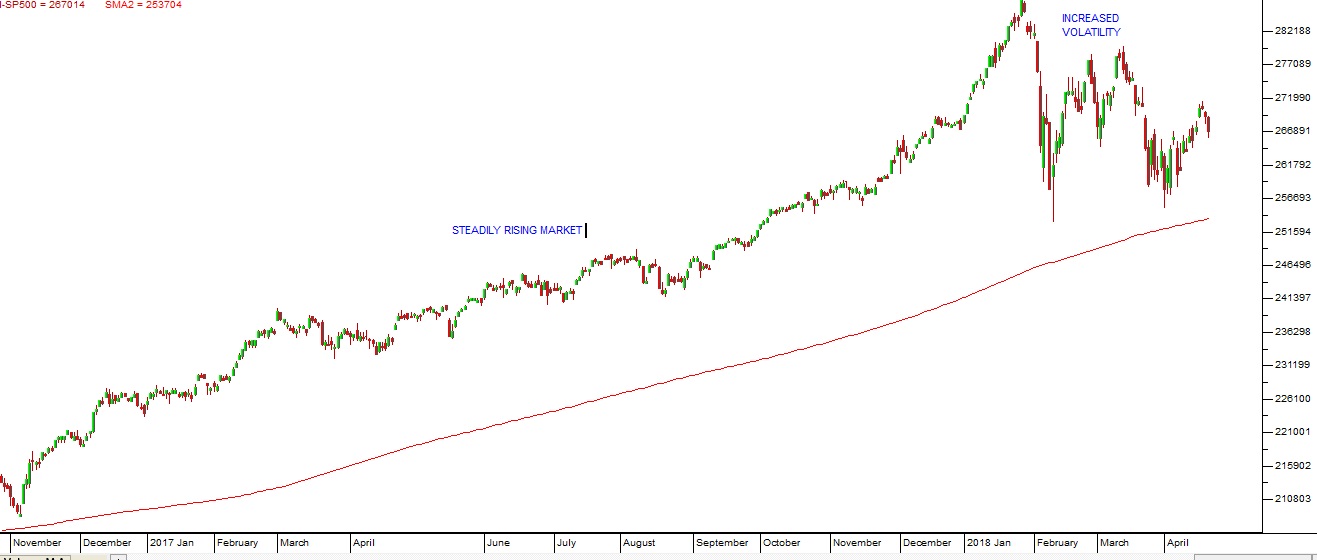VOLATILITY
12 May 2016 By PDSNETThe degree to which a share deviates from its average. High volatility is associated with risk, both fundamental risk and technical risk. For example, shares in marginal gold mines can be extremely volatile because their operations are only just profitable or unprofitable depending on the day-to-day price of gold - so that their performance is highly geared to the gold price. The volatility of the market as a whole can be a good indicator of uncertainty. If the future looks rosy and shares are expected to climb steadily, then investors are happy and volatility is low. The opposite is also true. In the face of a major correction or bear trend, volatility increases as investors become nervous. Consider the following chart of the S&P500 index on Wall Street:

You can see here that for the period between November 2016 and January 2018, the S&P rose steadily with a few minor corrections - volatility was very low. Then, suddenly there was a 10% correction in February 2018 resulting in a sharp increase in volatility. The uncertainty which this generated will last until the S&P can make another new record high and the bull trend resumes.
Read the following related article - https://www.pdsnet.co.za/index.php/volatility/
Share this glossary term: